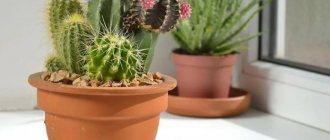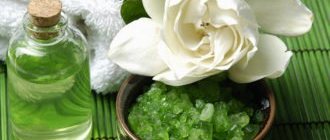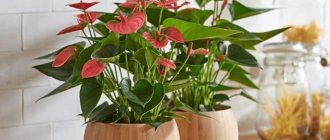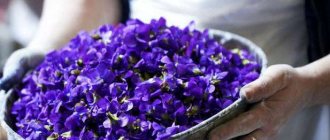» Signs » Signs and superstitions associated with Hatiora
0
1715
Article rating
Hatiora is a cactus that grows naturally in the tropical forests of Brazil and pleases the eye with abundant flowering. In the article we will tell you what signs and superstitions exist about Hatiora.
Signs and superstitions associated with Hatiora
Popular beliefs
Hathiora is known as a bearer of controversial fame. All signs associated with it are divided into positive and sharply negative. Let's start with the second group.
- Hatiora is popularly called the flower of drunkards , because its presence in the house creates a desire to drink alcohol, both in the owner and the hostess. And the more flowers a cactus has, the more relentlessly the owners of the premises will abuse it.
- They also say that if a flower is kept in the house, it can lead to family breakdown . Therefore, it should not be in rooms where the owners spend a lot of time, especially in the marital bedroom. Even the appearance of Hatiora (dangling stems with leaves) is very reminiscent of hanging plants growing in hanging pots - symbols of female loneliness and sadness.
- Many consider the plant to be an energy vampire ; supposedly it takes away positive energy with its leaves and only gives out negative energy. Therefore, it is recommended to keep Hatiora away from places where the family spends a lot of time.
Giving cacti will only be allowed if they have flowers. Otherwise, the relationship between the person giving and the person receiving the gift will instantly deteriorate. And if you accept the non-blooming Hathiora, then quarrels and disagreements in the house will become a constant occurrence.
Ways to neutralize negativity
Of course, even the most superstitious housewife is unlikely to blame the cactus for all family problems. However, those who are accustomed to attach great importance to signs should exercise caution and neutralize possible negativity. After all, as you know, popular beliefs work on faith - the more you listen to them, the more often they come true. For very superstitious flower lovers, there is only one answer to the question “is it possible to grow hatiora at home” - it’s better not to. Especially if family relationships are already strained.
Popular wisdom recommends not keeping dangerous flowers in living quarters, bedrooms, and children's rooms. A pot of succulent would look much more appropriate in the kitchen or living room.
A very good solution would be to keep the hatiora at home near the computer, microwave oven, or router. There it is needed to cleanse the energy field - it is believed that cacti block harmful radiation.
The best place for a pot with a cactus is considered to be a cabinet or window at the entrance to the apartment. This is a sure way to ward off ill-wishers from your home.
Why does it bloom?
Positive signs are associated with the flowering of a cactus.
- The sudden appearance of flowers on a plant that has not flowered for a long time symbolizes the onset of great good changes.
- Flowering of Hatiora in the house of an unmarried woman means that she will soon get married.
- And if the plant blooms in the house of a married couple where there are no children yet, then they will appear very soon. Even by the shade of the flowers, you can determine the gender of the unborn child: dark - there will be an heir, light - a girl.
- If you already have children and there are no plans to add new family members, but Hatiora has blossomed, the family will be in for a monetary gain, a successful acquisition, or unexpected income.
It turns out that in order to neutralize negative signs, you need to make an effort so that the plant blooms.
Family well-being indicator
People have noted one curious property of the succulent. The more tense the situation in the family, the more active and magnificent the “drunkard’s dream” grows. This makes the plant a kind of relationship indicator. Succulents are believed to absorb negativity. Therefore, the worse the energy in the apartment, the better the prickly plant feels.
There is a positive side to this belief about hathior in an apartment. The more lush the plant, the more negativity it can absorb and, therefore, clean out. Therefore, if “male tears” first grew and then blossomed, the omen is considered very good - relationships in the family will improve, the financial situation will strengthen, and very soon everything will certainly get better.
Feng Shui meaning of a flower
According to Feng Shui, Hatiora has the ability to effectively suppress negative energy by absorbing low vibrations that negatively affect household members. Therefore, experts recommend placing the flower in small rooms (narrow corridors, bathrooms). Here the succulent will prevent stagnation of energy.
A good place for a cactus is the living room or kitchen, where guests often gather. With its help, communication with friends and acquaintances will become more sincere.
Hatiora is simply irreplaceable in public institutions and offices . It helps cope with stress among employees, extinguishing negative emotions, and also clears the space where many people accumulate, extinguishes aggression and helps to improve the situation.
Characteristics of Hatiora and species diversity
Hatiora has a fibrous superficial root system and is distinguished by the absence of leaves in the usual sense. The plant's stems consist of small, individual evergreen segments that form roots that allow the plant to absorb moisture from the air. Different types of plants have different shapes of segments: flat, pin-shaped, cylindrical.
Good to know!
It should be noted that color appears only on young shoots, which over time become woody and turn brown. The flower stalks look like small bells with many petals of different colors: yellow, pink, red. Flowering begins in spring and lasts several weeks.
The crown of the succulent is spreading and resembles a skeleton, which is why one of the names of hatiora is dancing bones. At home, the flower can reach half a meter in height. Due to the strong branching of the shoots, the plant needs support.
Only a few types of hatiora are grown at home:
- Hathiora pink. The most striking representative of Cacti with drooping shoots. Each segment is ribbed, green with several pink streaks, covered with small white roots. The length of each segment is 25 mm. Beautiful pink buds form at the ends of the shoots, from which tubular flowers up to 4 cm in diameter subsequently bloom.
Hathiora pink - Hatiora Grezer. It has drooping shoots consisting of bright green segments up to 25 mm, which over time become brown at the base. The flowers are bright, large pink or bright scarlet. Hatiora Grezer
- Hathiora saltwort. The shoots are erect, consist of cylindrical segments, bright green, densely branched. Each lobe reaches 28 mm. At the ends of the shoots, bright yellow, bell-shaped flowers develop.
Hathiora saltwort - Hathiora Hermine. This epiphytic succulent is distinguished by short shoots consisting of small cylindrical segments (up to 5 cm) with small jagged dark green shades. Flowers with a diameter of 2 to 2.5 cm have a bright pink color. The cactus itself reaches a height of 30 cm.
Hathiora Hermine - Hathiora salicorniformes. A succulent in the form of a bush with hanging shoots consisting of club-shaped segments up to 5 cm long. An adult plant reaches 50 cm in height. The buds are bright yellow in the form of bells, 1 cm long. As the plant grows, its shoots gradually become woody and turn brown.
Hathiora salicorniformes
Is it possible to keep a houseplant in the house?
If you find the right place for a succulent, then you can and even should keep it in the house, as it will only bring benefits.
Benefit
Hatiora has the ability to protect a person from evil otherworldly forces, the evil eye and damage , so the presence of a flower in the house will drive away bad people from the family. This plant also pleases with its bright flowers when it is cold outside the window. Isn't this a benefit - a good mood?
How can it be dangerous?
One version of Hatiora's unwanted presence in the house can be explained from a scientific point of view. Allegedly, this succulent is a poisonous plant. However, there is no confirmation of this information, since Hatiora is not included in the official list of poisonous plants. But if you are still afraid of this unofficial fact, place the plant away from children and animals.
Dangerous gift
To place a cactus in an apartment, signs advise buying it. But accepting it as a gift or giving it yourself is extremely undesirable. It is believed that a gift will lead to a quarrel with the donor.
But the sign can be easily neutralized. To make a gift safe, you should pay some money for it. The amount is not important. The very fact of payment turns the gift into a purchase, and the negative will thereby be repaid.
Where is the best place to put it?
The plant feels great where there is frequent quarrel or negative energy . It simply feeds on bad fibers. Therefore, it is best to place cacti in places where negative, heavy energy is most likely to accumulate, or where people with unfriendly messages may be present.
- It’s not for nothing that Hatiora can often be seen on office desks and near computers. Placing it near the gadget at home is also an ideal option.
- The kitchen is a great place, as soot from gas and fat will nourish Hatiora, replacing negativity.
- Hallway. Here the succulent will absorb negative energy emanating from uninvited guests, ward off damage, evil eyes and other bad intentions aimed at the owners.
To believe signs or not is everyone’s personal choice. Forewarned is forearmed, and you now know how to place Hatiora so that she brings only benefit. In response, the plant will delight you in winter with bright flowers and lift your spirits.
Secrets and difficulties of caring for hatiora at home
In order for the hatiora to please with its lush flowering and to develop normally at home, it is necessary to provide it with good care.
Lighting
The cactus does not tolerate bright sunlight, so it must be kept in places with diffused light, but sufficiently illuminated. However, it is not recommended to place it on windows facing north, as this may negatively affect flowering. If you have a shaded balcony, the flower can be taken out into the air in the summer.
Temperature and humidity
Compliance with the temperature regime and maintaining optimal humidity for the hatiora is the key to its proper development and lush flowering. Therefore, you should monitor the room temperature very carefully, since the succulent does not like sudden changes in temperature.
On a note!
In winter, the normal temperature for keeping a cactus is considered to be 7-13 degrees, and in summer – 22-27°C. In autumn, when the flower enters its dormant period, the temperature should be from 12 to 16 degrees. Given the natural habitat of the succulent, maintaining high air humidity is a necessary condition for the proper maintenance of the plant. During the hot period, it especially needs spraying, and during the dormant period, excessive moisture will not benefit the cactus.
Watering and fertilizing
Regular watering and fertilizing the plant with mineral fertilizers is an important condition for proper care. For irrigation, use settled water at room temperature or warm boiled water. However, overwatering can lead to root rot and bacterial infections.
In summer, watering should be increased, especially during the growing season of plant development. In the autumn-winter period, watering is reduced to a minimum, maintaining normal soil moisture.
The plant is fed depending on the growth phase of the hatiora. During the period of rapid formation of shoots, it is necessary to apply nitrogenous fertilizers twice a week, and during the period of abundant flowering, use potash fertilizers.
Diseases and pests
Bacterial and fungal diseases often affect hathiora. To recognize a disease in a plant, it should be carefully examined.
When a succulent is infected with a bacterial infection, quickly spreading wet spots appear on the segments. If the use of antibacterial agents does not bring results, then the infected shoots should be removed. If a flower is heavily infected, it is necessary to take a healthy segment and grow a new bush from it.
Late blight and fusarium are the most common diseases of perennials. Late blight begins in the plant due to constant heavy watering, leading to root rot. At the same time, damage to a flower by this disease can occur when it is transplanted into an already infected soil mixture.
A diseased succulent withers and its bright color fades. To cure the plant, it is treated with a fungicide solution. If the shoots are mechanically damaged, the cactus can develop fusarium, which can also be treated with fungicidal drugs.
In addition to fungal and bacterial diseases, hathiora can be affected by various pests:
- scale insect;
- whitefly;
- spider mite;
- worm.
Remember!
The presence of pests on the plant is indicated by the pale color of the flower, the falling of segments, withering of the buds, yellowness and lethargy of the shoots. Special preparations are used to control pests.
Skin types
There are 4 skin types:
- Normal - medium thickness and density, has an even color, is tolerant of temperature changes and other negative environmental influences, is not prone to inflammation, does not have a greasy sheen, and has small pores.
- Dry - thin, matte, has increased sensitivity, often dries out, since the activity of the sebaceous glands is low, often flakes and is subject to irritation, signs of aging in some cases appear after 25 years.
- Oily – dense, thick, with enlarged pores and increased sebum secretion, often has an oily sheen, is prone to comedones (blackheads and white closed cystic formations) and acne, but looks young longer than other types.
- Combined - combines 2 types at once, for example, in some areas oily (dry), in others normal.
Normal skin needs standard cleansing, toning, moisturizing and nutrition. Dry skin needs more hydration and nutrition than other types. Products for it must be chosen that are soft and do not cause irritation.
For oily skin, it is important to pay great attention to cleansing and mattifying. To do this, you need to use masks weekly, for example, on clay foundations - they tighten pores, remove oily shine, and provide additional cleansing. For combination skin, you should combine skincare products
If dry areas are observed, additional moisturizer is applied to them. For oily skin – mattifying. If inflammation occurs, antibacterial and drying agents are applied pointwise.
For combination skin, you should combine skin care products. If dry areas are observed, additional moisturizer is applied to them. For oily skin – mattifying. If inflammation occurs, antibacterial and drying agents are applied precisely.
Reproduction
In Hatiora, to maintain its attractiveness, the crown is formed periodically after flowering - pinching. To do this, unnecessary segments are manually unscrewed from the barrel. The resulting cuttings are used for propagation if desired.
Before rooting, the planting material is allowed to sit for 1–2 days at room temperature. After this, the cut is lowered into “Kornevin” and the cutting is planted in the ground.
It can be covered with a jar on top or left open. Watering is necessary when the soil is almost dry, since the cut is a breeding ground for fungal and bacterial infections and can rot in high humidity.
If everything is done correctly, then in a month the cutting will begin to develop. With good care, the sprout is capable of flowering in a year.
How to propagate and replant an indoor flower
The main type of propagation of indoor flowers is cuttings by segments. It should be remembered that the segments that are to be cut should be torn off from the shoot manually, as if twisting, without using any tools.
Let's consider a step-by-step algorithm for rooting cuttings:
- Break off a selected cutting with several lobes (2-3) from an adult plant.
- The base of the broken cutting must be dried and treated with crushed coal.
- Prepare a peat-sand mixture and plant cuttings in it for rooting.
- Water the planted material moderately.
- Place the containers with the planted cuttings in a greenhouse in which to maintain the temperature from 20 to 24 degrees, while regularly ventilating.
- After rooting for a month, the young plant is planted in a permanent flowerpot.
Cuttings
Sometimes cuttings are placed in containers with water, having previously been treated with Kornevin’s solution. After a while they sprout roots.
Another way to propagate perennials is to sow seeds for seedlings. However, for this method to produce results, it is necessary to have experience in breeding activities. Seeds are sown very quickly in a moist soil mixture so as not to lose germination. After sowing, a certain temperature (+20-25 degrees) and humidity in the greenhouse are constantly maintained.
Important!
Bottom heating of the soil is necessary. The process of seed growth is very long and painstaking. After the seedlings have germinated, they are moved to a bright place without removing the shelter. And after 3 weeks they begin to accustom the young plant to the environment. The germination rate of plants from seeds is low, so this method of cactus propagation is complex and not always suitable for amateur gardeners.











